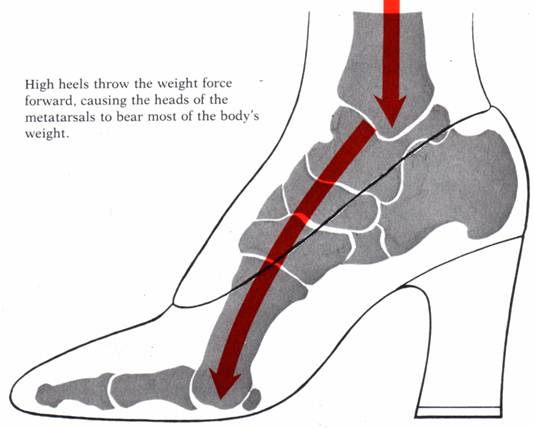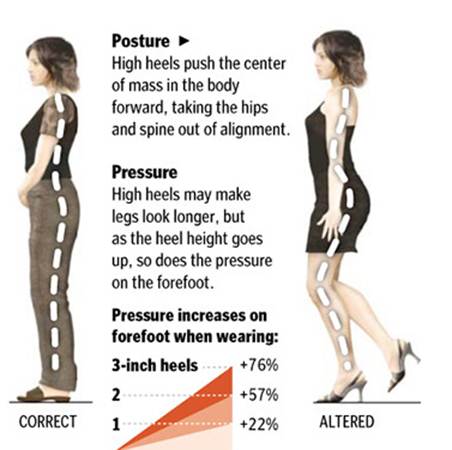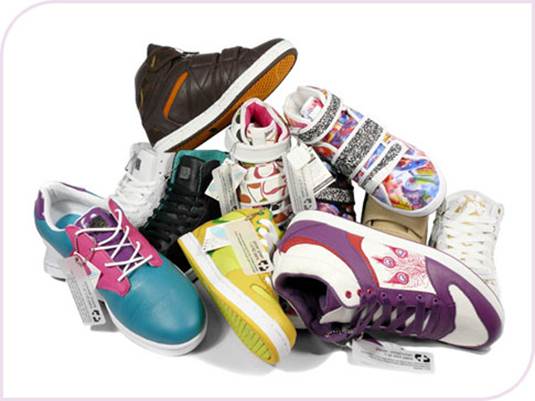Quadriceps degeneration: Imagine you're standing on a high slope such as skiing slope your
toes are downward. To balance this tiptoe posture, your body will bend knees
slightly and bend back. As a result, the quadriceps is forced to work
continuously, causing them to sclerosis and injure. Walking with the knees bent
posture will create 200% pressure on the kneecap, impact on cartilage and
increase the risk of arthritis - by Howard Danaberg, DPM, bone specialist in
Bedford.
Leg pain:
High heels stretch the muscles in the legs, while legs act as control of the
front feet. This repeated stretching can lead to leg injuries.
Calf injury:
High heels makes your leg muscles to locate at shorter position, over time,
this process becomes chronic. A study in the Journal of Experimental Biology
proved that those wear high heels have the leg muscles 13% average shorter than
those do not, making them difficult to walk without high heels because they are
unfamiliar with normal strides.
Solutions with high heels:

Stretching the leg muscles: Help your calf stretch every day as the method of Bowman: You can
stand with tiptoe posture, put a towel underneath the right foot, put right
heel down on the floor. When your feet feel comfortable, let your left foot
move a small step forward, keep your hips straight. Keep this position in 20-30
seconds and gradually increase to 60 seconds.
Leg massage:
Remove leg pain by self-massage gently, press your finger gently on the front
part of below feet, then, focuse on massage the body horizontally - by Bowman.
Using alternatively with convenient
shoes: change to the lower-heeled shoes when
moving, and use high heels for luxury places as in the office - when you need
to be beautiful.
Choosing high heels:

Your legs tend to be bigger in the day, so
if you feel your shoes a bit tight at 7:00 am, then it would be extremely tight
in the evening. Just buy shoes that fit and consider the low-heeled shoes. The
study demonstrated that a 2-inch heels force with intensity more than 4%
compared with sneakers, while, 3-inch heels force with intensity by 33%.
Sneakers

Sneakers seem to be an ideal alternative to
high heels, but the truth is that even ballet sneakers or ordinary soft cloth
shoes can also affect health - by Megan Leahy, DPM, foot specialist.
Enemies of the leg frame: A lot of sneakers do not have supportive parts (like the details
that you see in a pair of sport shoes). Without it, ligaments and tendons along
the feet soles will be stretched too much and the leg frame can be collapsed -
by Marlene Reid, DPM, foot surgeon. This process leads to fascist state of leg
(plantar fasciitis) - an inflammation in the soles. If your feet are flat
naturally, you will encounter more trouble than without supportive details.
Feet soles are stretched: Many usual sneakers do not have padding inside as the high-heeled
shoes or sandals. The lack of these pads will promote heel pain or foot pain
when you walk, especially when you have high foot frame - by Dr. Leahy.